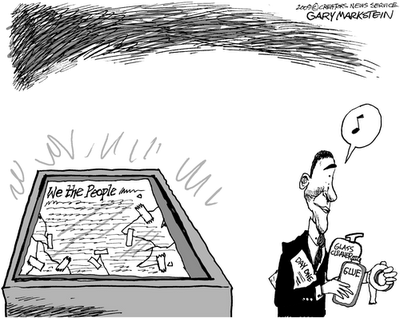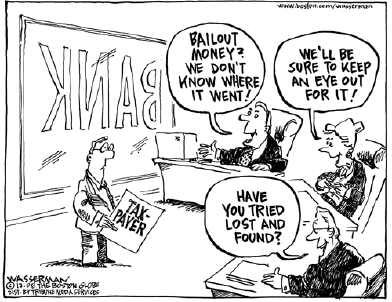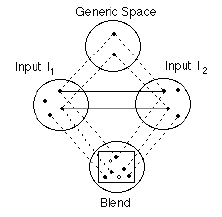Luhmann’s secret diamonds
New entries for the Zettelkasten
FULL TEXT
http://www.thinkartlab.com/pkl/media/Luhmanns Diamonds/Luhmanns Diamonds.pdf
http://www.thinkartlab.com/pkl/media/Luhmanns Diamonds/Luhmanns Diamonds.html
Abstract
A kind of a similarity between Luhmann’s concepts of sign, system, difference and re-entry and the main figures of diamond theory is observed.
1.2. Interpretation
It seems to be more fruitful today to thematize and formalize Luhmann’s distinctions with the help of diamond theory instead of the Calculus of Indication of George Spencer Brown.
A key notion in Niklas Zettelkasten, obviously, is self-reference.
The other crucial notion is the self-referential concept of difference.
With that all kind of connections to logical, methodological and epistemological considerations are provoked. A strange connection to Spencer-Brown was inaugurated, mainly by the influence of Heinz von Foerster. The re-entry figure became a machina creativa, albeit nobody had a training in formal languages at all.
Difference and relation; différance
But Luhmann’s work is about social theories and not about logic. Neither is Luhmann’s theory of social systems a semiotic or semiological theory. This point ios not yet well understood. Semiotics, but the french “sémiologie” too, are based on relations, triadic for semiotics and dyadic for semiology. But Luhmann’s concept of a self-referential and “therefore”, paradoxical concept of difference isn’t based on relations but on difference (Unterscheidung). Relations are presupposing difference, and are thus secondary to the paradox concept of difference. Relations are logical and not paradoxical.
Derrida has given strong deconstruction of the semiological and semiotic sign concept and its relational foundations in logocentrism. With his radicalized interpretation of de Saussure’s semiology, he transformed the concept of difference to the paradoxical non-concept of différance. The difference of the difference, the différance, is not in a relationship to relations.
Similar, Gotthard Gunther’s non-concept of proemial relationship.
Hence, Luhmann’s insistence on self-reference might well be reformulated in different ways. One, which I proposed for many years, is interpreting self-reference and its circularity in the framework of a polycontextural understanding of chiasms, i.e., technically, as proemial relationships.
Now, after this chiastic theory got some maturity, albeit not much recognition, it is time to introduce the diamond approach to difference and circularity of system and environment . Diamond strategies are a further radicalization of the earlier approach of polycontextural chiasm.
Also Luhmann’s work is not well known in the Anglo-Saxon world, it isn’t a wrong feeling to observe that also the themes and topics, and their highly reflected treatment by Luhmann, has no real existence in the world-leading sociological literature of the super-power theoreticians.
2. Supplementing the Zettelkasten
It doesn’t seem too risky to risk an interpretation of Luhmann’s theoretizations out-side or beyond second-order cybernetic figures and metaphors.
In other words, is there a strict necessity to understand Luhmann’s adventure in terms of his entries of his own Zettelkasten?
Is it possible to ‘re-construct’ his constructivism and re-enter into it without its terminology and jargon of difference, distinctions, re-entry and self-referentiality?
Luhmann’s theory is self-referential, thus it could refer to itself in different terminological modi, and still keeping its adventures strategies and networks of constructing a de/constructive theory of social systems alive.
Hence, I will take the risk to supplement the Zettelkasten by smuggeling some non-contents of diamond boxes into this, now electronic, Zettelkasten.
By re-reading the passage with its introduction of the difference of system and environment, I think that I’m observing, or as I prefere to say, hallucinating some features not yet been recognized and mentioned, neither explicitly by Luhmann nor by his followers.
Self-referentiality without referentiality?
The rhetoric figures of Luhmann’s texts are not necessarily determined by the frameworks of the used technical weaponry. The cage of the jargon is not necessarily incarcerating the dynamics of the gesture.
Technically, I try to understand Luhmann’s theory of social systems from the viewpoint of polycontextural and diamond systems. Hence, I try to avoid to go into the litany of second-order cybernetics, systems theory and Spencer-Brown’s Calculus of Indication and its extensions.
Even more technically, my interpretation of Luhmann’s gestures with the introduction of his rhetoric figures is due to a morphogrammatic subversion, abandoning any jargon and terminological content, as crucial as it might be, and conceiving the dynamics of the pattern, only.
After this new diamond approach is introduced, experienced and further developed, a renewed lecture of Luhmann’s work as involved with the above mentioned second-order trends, might happen again.
The term “diamond” refers to itself, only. There is no reference to exposed marketing labels necessary.
2.2. Uncovering Luhmann’s diamonds
Statement
"When a communication constitutes a previous communication as a communication, it simultaneously distinguishes it from all those other things in the world that are not communication. In this sense, all operations of autopoietic systems always constitute the difference between the system and its environment
How can this happen? If an operation of an autopoietic systems is producing by its action, i.e. operation, both, the intended operation and at the same time, the operation of distinguishing the system of the first operation from its environment, then it “constitute[s] the dfference between the system and its environment”. How is an autopoietic operation simultaneously operating in its domain (system) and producing an environment of the domain? Or in other words, how is an operation operating that it is able to operate and thereby by such operation constituting (operating) its own environment?
The first answer, which might be given by Luhmann is the hint to Spencer Brown’s Calculus of Indication: “Draw a distinction!” With this distinction, the ‘world’ is ‘divided’, i.e. ‘distinguished’ into two parts, the inside and the outside of the ‘world’ or ‘space’.
But what is given by the CI? Two ‘equations'.
In this formulation, no world appears. The world or space is presuposed and realized by a sheet of paper or another medium of inscription. This might be interpreted cognitively by a user of the CI. And this interpretation will become a meta-theoretical environment of the calculus. But nevertheless no part of the calculus in question.
Again, "When a communication constitutes a previous communication as a communication, it simultaneously distinguishes it from all those other thing in the world that are not communication.”
Interpretation
"When a communication constitutes a previous communication as a communication"
This is involving several procedures:
1. "communication constitutes a previous communication", this might be naturally understood as a composition of two communications.
2. "as a communication” means, that the composition has to be realized as a composition of communications and nothing else. But this condition is exactly what is called the ‘matching conditions for compositions'.
4. With this formulation we get a clue to understand what could be meant by the consequence: “it simultaneously distinguishes it from all those other thing in the world that are not communication."
This consequence of the composition of communications is following consecutively the ‘assumption' of the operation of composition albeit it states its simultaneity.
Diamondization
Luhmann’s communicational statement, the ‘axiom’ of communication, interpreted as a categorical composition of communications offers a natural introduction of the otherness of communication, i.e. the simultaneous environment of communication by the saltatorical hetero-morphisms.
It needs two communications to realize communication and its environment as the singular otherness of communication. This asymmetry is directly covered by the saltatories od diamond theory, which are complementary to the categories of communication.
Because of the operativity of the diamond interpretation of Luhmann’s conception of communication, communication might now be studied operatively on all levels of complexity and complication necessary, together with their interplay.
This diamond interpretation is not reducible to the indicational calculus and its use for autopoietic and communicational systems.
Again, what are the conditions for communication? Communications have to be “anschlussfähig”, i.e. they have to fulfil the conditions of connectivity.
In category and diamond theory, such conditions are exactly the matching conditions of composition.
Now, there are two possibilities opened up.
One insists that the conditions of the possibility of something are not identical with such a conditional something.
The other position could take a highly formalistic turn towards self-referentiality and postulate that there is no logical difference between the conditions of something and such a something.
Without doubt, the latter position leads quite directly to logical paradoxes. But who cares?
Why should we use logic? And which logic anyway?
It also could be mentioned that the comparison itself is too much restricted by logic and alternativity.
The first position sounds harmless if we take the statement in a hierarchical way, i.e. if we postulate a sequential order between the conditions and the entity. But why should we accept this decision as the only working possibility?
The diamond approach, obviously is postulating a simultaneity of both thematizations, the conditions of the possibility and the characteristics of the entity.
It might be a question of taste which of both positions has to be considered as more crazy: the ultra-formalistic or the diamond approach.
Re-entry and in-sourcing
``To cope with these consequences of a re-entry of the internal/external difference in itself, the system needs and constructs time.” (Luhmann)
Again, in-sourcing:
"The idea of in-sourcing the matching conditions into the definition of diamonds seems to be in correspondence with the two main postulates of "Chinese Ontology", i.e., the permanent change of things and the finiteness or closeness of situations. That is, diamonds should be designed as structural explications of the happenstance of compositions and not as a succession of events (morphisms)."
The figure of re-entry tries to correspond to the device to include “the internal/external difference in itself”. This happens in “consequences” and needs/constructs time.
Hence, the idea of a simultaneous realization of the difference of system and its environment gets lost in the infinit delirium of self-reference.
In-sourcing the matching conditions of composition is a finite and simultaneous constellation of categories and saltatories. It is the interplay of both, categories and saltatories of a diamond constellation, which is realizing the figure of re-entry in a finit and differential manner.
Both strategies, the re-entry and the in-sourcing, seems to correspond to a similar gesture.
FULL TEXT
http://www.thinkartlab.com/pkl/media/Luhmanns Diamonds/Luhmanns Diamonds.pdf
http://www.thinkartlab.com/pkl/media/Luhmanns Diamonds/Luhmanns Diamonds.html



